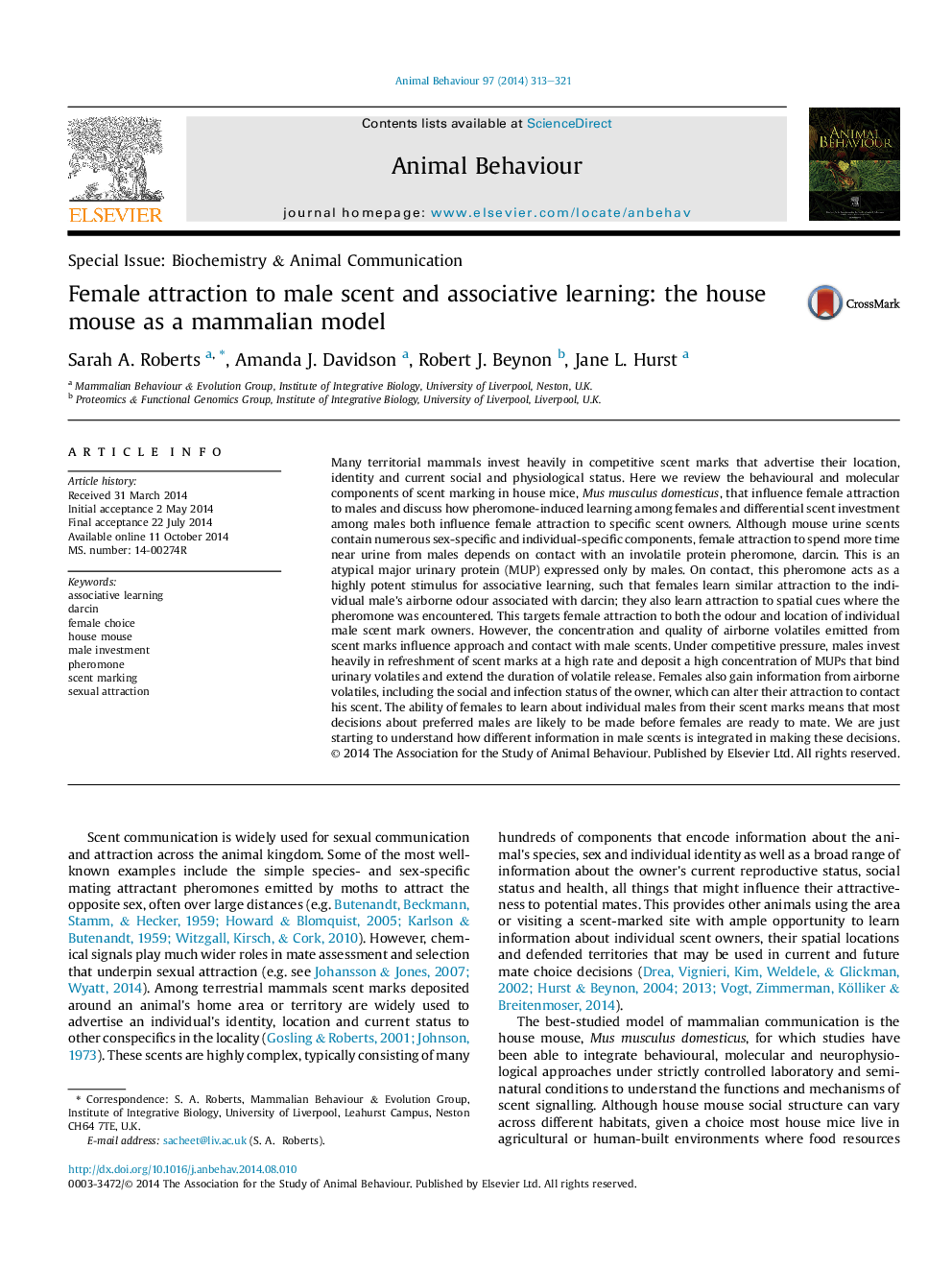| کد مقاله | کد نشریه | سال انتشار | مقاله انگلیسی | نسخه تمام متن |
|---|---|---|---|---|
| 8490349 | 1552231 | 2014 | 9 صفحه PDF | دانلود رایگان |
عنوان انگلیسی مقاله ISI
Female attraction to male scent and associative learning: the house mouse as a mammalian model
ترجمه فارسی عنوان
جذب زن به عطر مردانه و یادگیری وابسته: ماوس خانه به عنوان یک مدل پستانداران
دانلود مقاله + سفارش ترجمه
دانلود مقاله ISI انگلیسی
رایگان برای ایرانیان
کلمات کلیدی
یادگیری وابسته دارچین انتخاب زنانه، ماوس خانه، سرمایه گذاری مردانه، فرومون شناسایی عطر، جاذبه جنسی،
موضوعات مرتبط
علوم زیستی و بیوفناوری
علوم کشاورزی و بیولوژیک
علوم دامی و جانورشناسی
چکیده انگلیسی
Many territorial mammals invest heavily in competitive scent marks that advertise their location, identity and current social and physiological status. Here we review the behavioural and molecular components of scent marking in house mice, Mus musculus domesticus, that influence female attraction to males and discuss how pheromone-induced learning among females and differential scent investment among males both influence female attraction to specific scent owners. Although mouse urine scents contain numerous sex-specific and individual-specific components, female attraction to spend more time near urine from males depends on contact with an involatile protein pheromone, darcin. This is an atypical major urinary protein (MUP) expressed only by males. On contact, this pheromone acts as a highly potent stimulus for associative learning, such that females learn similar attraction to the individual male's airborne odour associated with darcin; they also learn attraction to spatial cues where the pheromone was encountered. This targets female attraction to both the odour and location of individual male scent mark owners. However, the concentration and quality of airborne volatiles emitted from scent marks influence approach and contact with male scents. Under competitive pressure, males invest heavily in refreshment of scent marks at a high rate and deposit a high concentration of MUPs that bind urinary volatiles and extend the duration of volatile release. Females also gain information from airborne volatiles, including the social and infection status of the owner, which can alter their attraction to contact his scent. The ability of females to learn about individual males from their scent marks means that most decisions about preferred males are likely to be made before females are ready to mate. We are just starting to understand how different information in male scents is integrated in making these decisions.
ناشر
Database: Elsevier - ScienceDirect (ساینس دایرکت)
Journal: Animal Behaviour - Volume 97, November 2014, Pages 313-321
Journal: Animal Behaviour - Volume 97, November 2014, Pages 313-321
نویسندگان
Sarah A. Roberts, Amanda J. Davidson, Robert J. Beynon, Jane L. Hurst,
